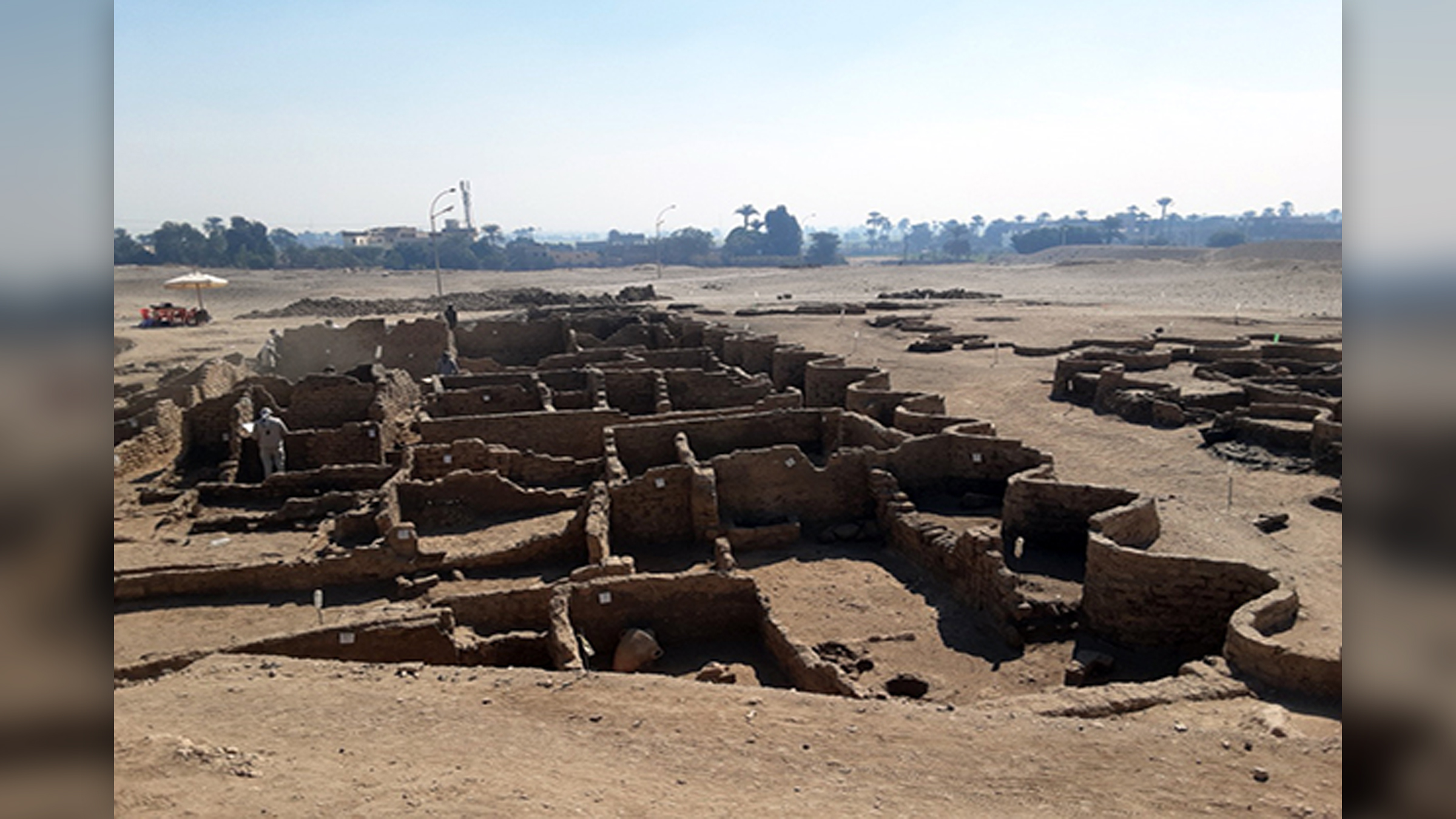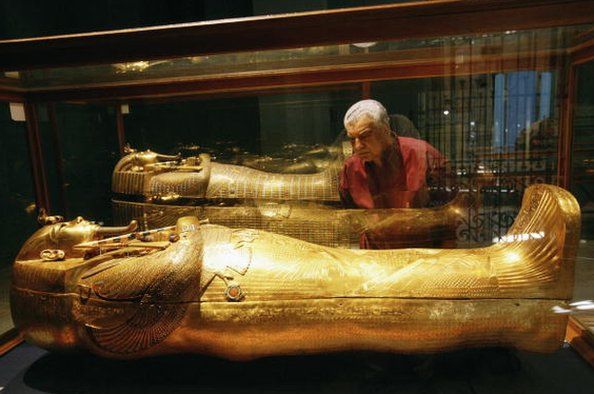The 3,400-year-old royal city was built by Amenhotep III, abandoned by his heretic son, Akhenaten, and contains stunningly preserved remains.
The discovery of a 3,000-year-old city that was lost to the sands of Egypt has been hailed as one of the most important archaeological finds since Tutankhamun’s tomb.
Famed Egyptologist Zahi Hawass announced the discovery of the “lost golden city” near Luxor on Thursday.
He said the find was the largest ancient city, known as Aten, ever uncovered in Egypt.
It was unearthed within weeks of the excavation starting in September 2020.
The city dates to the reign of Amenhotep III, one of Egypt’s most powerful pharaohs, who ruled from 1391 to 1353 BC.
The city continued to be used by pharaohs Ay and Tutankhamun, whose nearly intact tomb was discovered in the Valley of the Kings by British archaeologist Howard Carter in 1922.
- Tutankhamun’s coffin removed from tomb for first time
“The discovery of this lost city is the second most important archaeological discovery since the tomb of Tutankhamun,” Betsy Brian, professor of Egyptology at Johns Hopkins University in Baltimore, US, said.
She said the city would “give us a rare glimpse into the life of the ancient Egyptians” at the time when the empire was at its wealthiest.
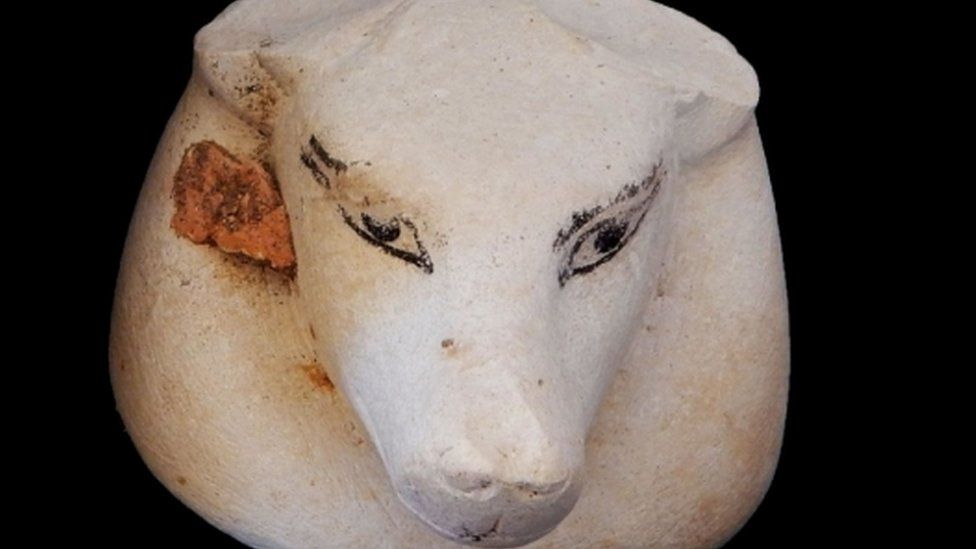
IMAGE SOURCE,REUTERSImage caption,Precious artefacts were found on the site, near the Valley of the Kings
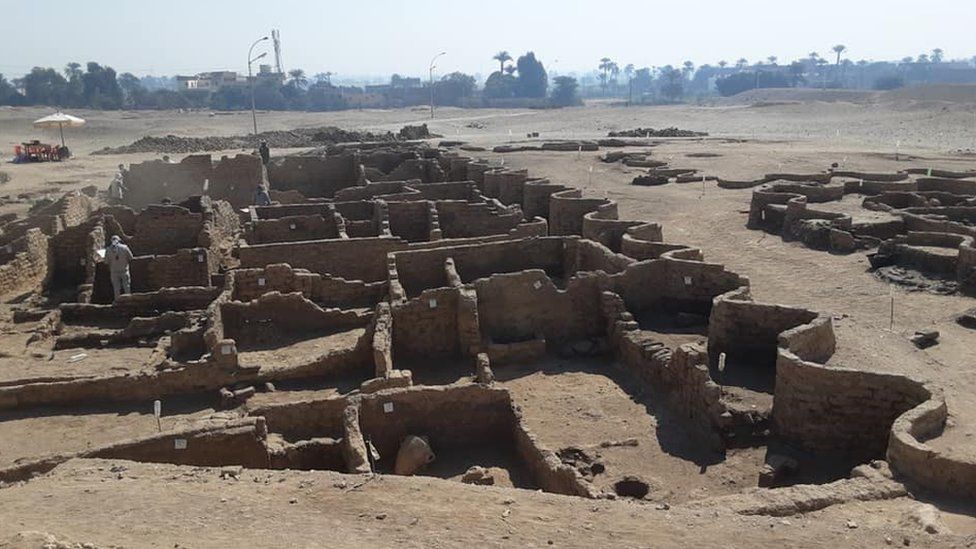
IMAGE SOURCE,DR ZAHI HAWASS ON FACEBOOKImage caption,The city is believed to have been founded by Amenhotep III, one of ancient Egypt’s most powerful rulers
The dig revealed a large number of valuable archaeological finds, such as jewellery, coloured pottery, scarab beetle amulets and mud bricks bearing seals of Amenhotep III.
The team began excavations on the west bank of Luxor near the Valley of the Kings, some 500 km (300 miles) south of the capital Cairo.
“Within weeks, to the team’s great surprise, formations of mud bricks began to appear in all directions,” Dr Hawass said in his statement.
“What they unearthed was the site of a large city in a good condition of preservation, with almost complete walls, and with rooms filled with tools of daily life.”
IMAGE SOURCE,GETTY IMAGESImage caption,Dr Hawass, pictured here looking at the sarcophagus of Tutankhamun, is a former antiquities minister
Now, seven months after the dig started, several areas or neighbourhoods have been uncovered, including a bakery, an administrative district and a residential area.
“Many foreign missions searched for this city and never found it,” said Dr Hawass, a former antiquities minister.
He said further archaeological work was under way at the site and his team “expects to uncover untouched tombs filled with treasures”.
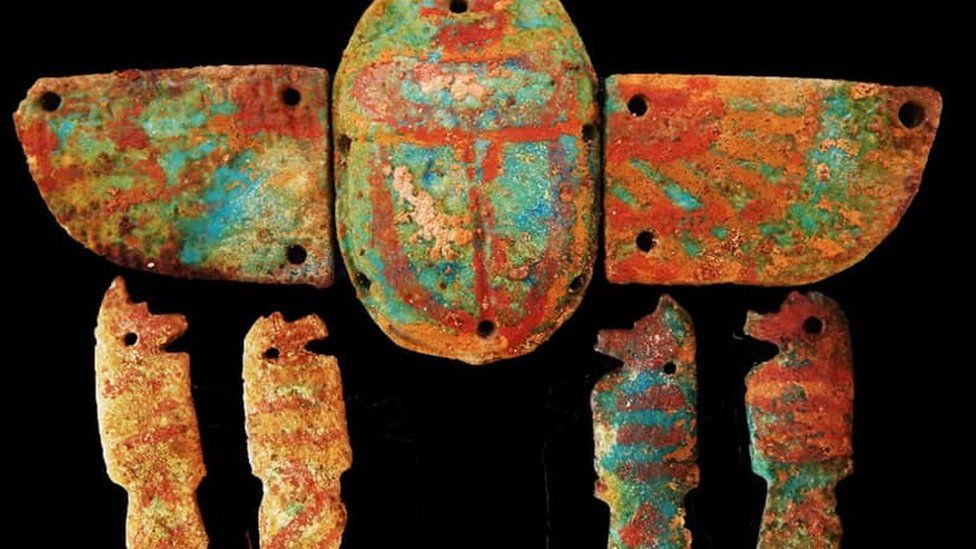
IMAGE SOURCE,ZAHI HAWASS ON FACEBOOKImage caption,The archaeologists found a large number of decorative and ritual items,
including scarabs and amulets
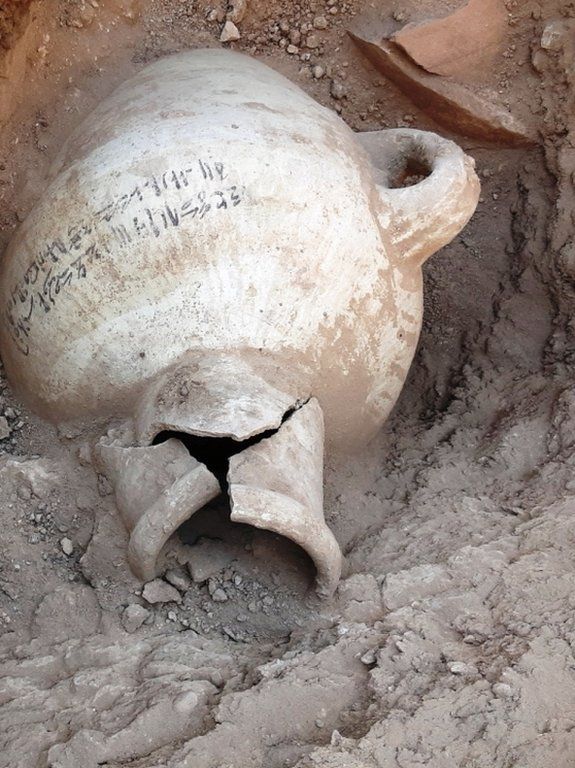
IMAGE SOURCE,REUTERSImage caption,Inscribed pottery vessels helped to date the site.
source: bbc.com



